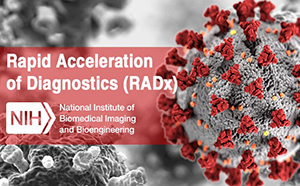Prescription digital therapy (PDT) is going through a pivotal moment. Recent studies validate its potential to improve mental health outcomes and reduce healthcare costs, while increasing efforts to bring closer regulatory clarity and payer interest are opening reimbursement pathways for widespread adoption.
This turning point is reinforced by growing consumer preferences and behaviors for comfort and customization. PDTs, which are FDA-regulated software applications used to prevent, manage, or treat medical conditions, offer just that. These preferences are not temporary. They are fixed expectations now.
With over 20 years in the healthcare industry, this push is not only real; It’s personal.
For too long, our healthcare system has not truly met people where they are. I have dedicated my career to focusing on changing that by putting people at the center. The launch of the first and only FDA-cleared PDT for symptoms of depression has been a powerful reminder of what is possible when we rethink how care is delivered and how it is experienced.
Especially in areas like mental health, digital interventions could fundamentally change traditional treatment pathways and alleviate barriers that have stood between the people who most need solutions.
After a year of real-world implementation, I gained some key insights to help unlock the viability of PDTs to address unmet needs across the healthcare ecosystem, for both patients and providers, and take meaningful steps to improve the healthcare experience.
Closing the access gap and providing care when and where people need it
Across the United States, the mental health system is stretched thin. 60% of psychologists has no openings for new patients, and almost 40% have a waiting list. The crisis expands when looked at at the national level, with more than half from counties that don’t even have a single psychiatrist.
This is a major access issue.
PDTs fill a critical gap while someone waits for care and, in many cases, provide a first line of support where in-person options do not exist. These digital interventions offer an evidence-based way, providing the scientific quality and rigor the FDA needs to not only begin treatment more immediately, but also to do so in the palm of their hands.
The opportunity? Addressing a public health challenge to meet high demand and bring a sense of immediacy and urgency to mental health care in a broken system.
Offering alternatives for those who do not want to add another pill
Fear of side effects persists 50% of Americans diagnosed with depression or anxiety from trying medications. one of the most persistent challenges What providers share regarding medication management is navigating the tension between efficacy and tolerability. Practitioners ask themselves, “How can I balance what may be the best option for each individual with the burden of side effects?”
This directly influences prescribing behavior, supports shared decision making with patient and provider, and impacts medication adherence.
When traditional medications alone are not enough, instead of adding another pill, PDTs are a non-pharmacological option that does not add anything additional to the fear of side effects. Many PDTs are complementary, meaning people are already taking medications. PDTs provide people living with mental health issues with a clinically validated alternative with minimal or no side effects. Additionally, PDTs meet people where they are: offering convenience to fit their lifestyle and an attractive solution to not adding additional medications or side effects to their regimen, especially for those more than half of American adults suffering from multiple chronic diseases.
Clinicians share interest in new tools and modalities that can expand how they manage a person’s treatment plan. By focusing more on individualization, PDTs help them better align with someone’s values, preferences, and autonomy.
The opportunity? A solution that appeals to user-centered design and integrates better into life while offering clinical effectiveness.
Identification of mechanism-based interventions for sustained treatment
Just a small handful of the thousands of mental health apps available are cleared by the FDA. While user experience and accessibility are critical, scientific rigor and credibility are paramount to ensure tools are evidence-based and implemented responsibly.
This is one of the most promising aspects of PDTs. They are based on clinical data and many are designed to attack the underlying factors of chronic diseases. I have learned that the most impactful PDTs on mental health can directly address emotional processing, cognitive control, and executive function, which are often disrupted and contribute to persistent symptoms.
These digital tools not only give someone tools to cope; They are designed to strengthen the systems that help those tools work. Think of this as physical therapy for the brain. You’re not just reducing symptoms in the short term. Some of these tools may also support longer-term functional recovery.
We’re hearing firsthand from doctors and patients that these tools can help attack the root causes of depression and anxiety, designed to help people build new cognitive pathways, master their mood, and reconnect with their purpose.
The opportunity? Different therapeutic mechanisms that involve people in their own healing in a structured, accessible and empowering way.
The growth opportunity
PDTs represent a $32.5 billion market opportunity by 2030. For healthcare leaders like me, this is not just a business; it’s about the potential impact for the millions of people living with mental health problems today. So that people finally have tools available that allow them to have greater control over their own care. So that people have access to care that fits their own lives.
With evolving regulatory, clinical, payer, provider and patient interests, now is the time to capitalize on this momentum. PDTs open up entirely new possibilities for mental health participation, experience, and outcomes.
The future of healthcare brings empathy and understanding to what people need most, balanced with scientific rigor, to ensure the health experience is more personalized and relevant for each individual. PDTs are a critical component in reshaping mental health engagement and meeting people where they are.
Photo: Anastasia Usenko, Getty Images
Desiree Priestley is the Director of Health Experience at Otsuka Precision Health (OPH), where he leads commercialization efforts for health experiences, support services and digital therapies, including the FDA-cleared mental health PDT, Rejoyn. With over 20 years in healthcare, she is passionate about designing care that fits real life, not the other way around. Their work unites complex health systems and the people they serve, driving innovation focused on people and outcomes. Whether driving digital transformation or mentoring the next generation of leaders, Desiree brings a bold, people-centered vision to the future of healthcare.
This post appears via MedCity Influencers program. Anyone can post their perspective on business and healthcare innovation to MedCity News through MedCity Influencers. Click here to find out how.



